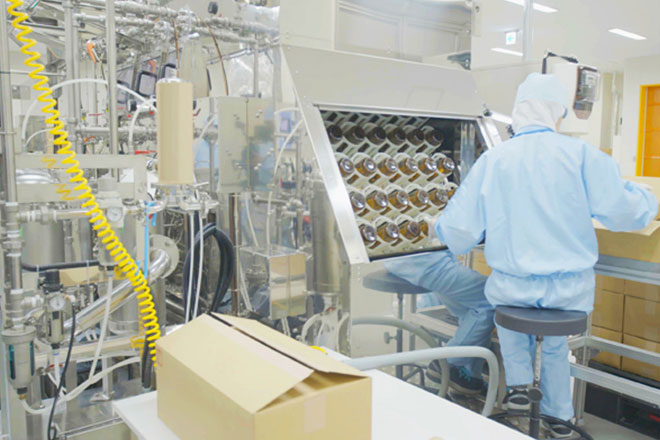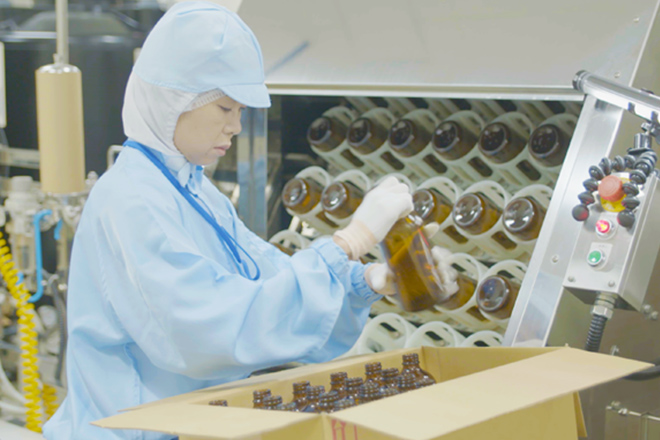Quality Control
Quality Policy
01
Provide products
and services
that satisfy customers
02
Pursuit of
"quality improvement" and
"complaint prevention”
03
Promotion of
"continuous improvement”
Outstanding safety is
what builds confidence
As GLASEL supplies mainly containers for holding cosmetics, pharmaceuticals, reagents, and health foods, we prioritize outstanding safety above all else. That means containers that consumers can use with peace of mind. We thus implement rigorous quality control, in the constant knowledge that maintaining consumer confidence is dependent on each individual product we manufacture.
External inspections are rigorously carried out to check for chips and scratches, tone, dirt, printing imperfections, and other problems and confirm that products meet company standards. These inspections are carried out in the clean room or another clean environment, and stringent assessments are carried out by experienced inspectors.
The wide-ranging function tests include fitting tests, adhesion strength tests for printing and paint, liquid leak tests carried out in a vacuum device to reduce the pressure and carry out fitting air tightness and environmental tests to measure durability in the face of temperature changes.
Dimension and volume measurements and other measurement tests are also performed in the process of stringent, accurate quality checking, which is carried out in several stages.
As a result, we can be confident that only high-quality, highly safe products that have cleared every test are shipped.
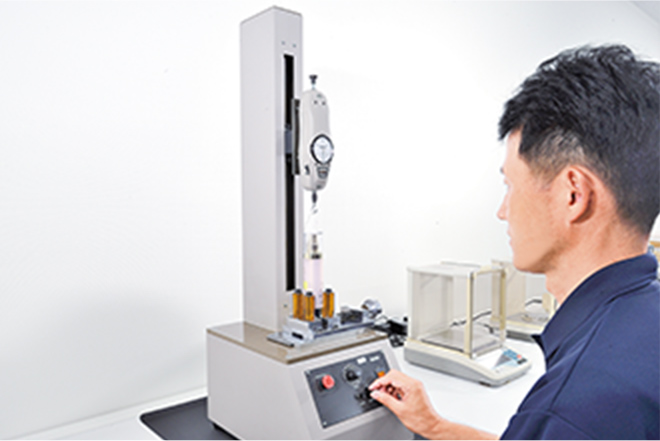
Compression/traction test using a push-pull gauge

Liquid leak tests in a vacuum device
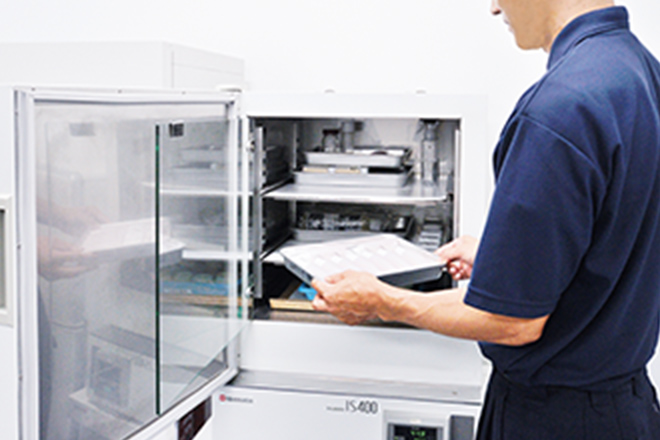
Environmental tests in a thermostat chamber
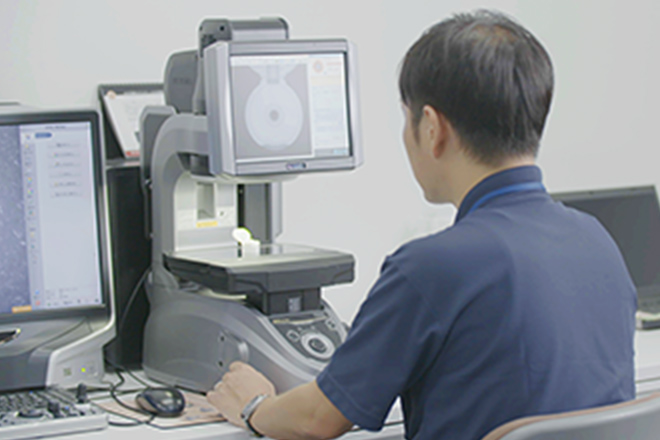
Measurement by Image Dimension Measuring System
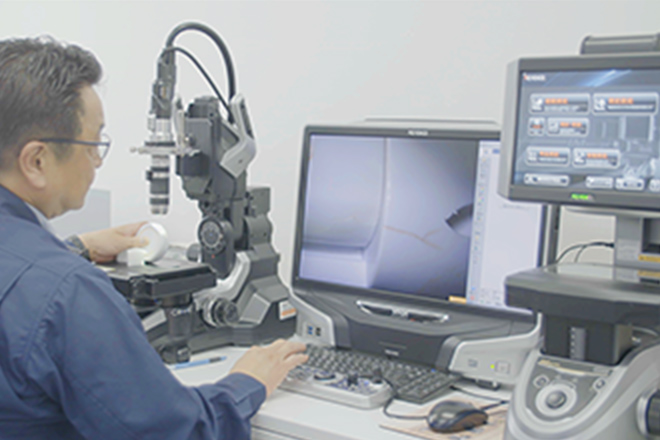
Observation by Digital microscope
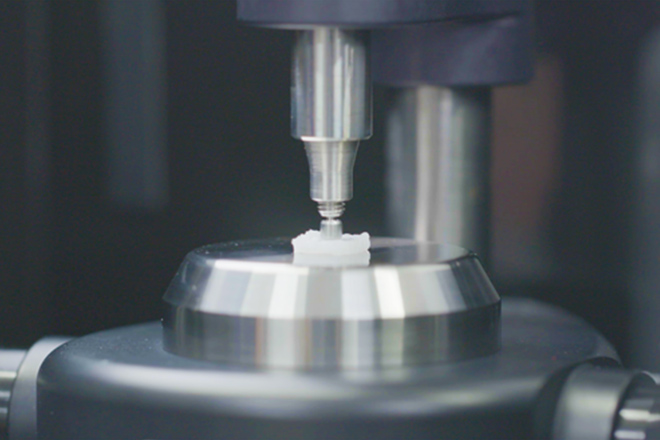
Material analysis by FT-IR
Clean room :
Raising the standards
of quality control
As one embodiment of our company philosophy that every employee should aim to raise product quality, GLASEL has established a clean room and rinsing line. In the clean room, clean air conditioning fitted with a sophisticated HEPA filter removes dust and microparticles, while constantly circulating the air and maintaining positive pressure* to prevent the entry of dust or foreign bodies when the door is opened and closed and people leave or enter, keeping the room clean. Pest control is outsourced to a specialist management company that provides regular guidance as part of our thorough-going efforts.
* Positive pressure: Maintaining high air pressure.
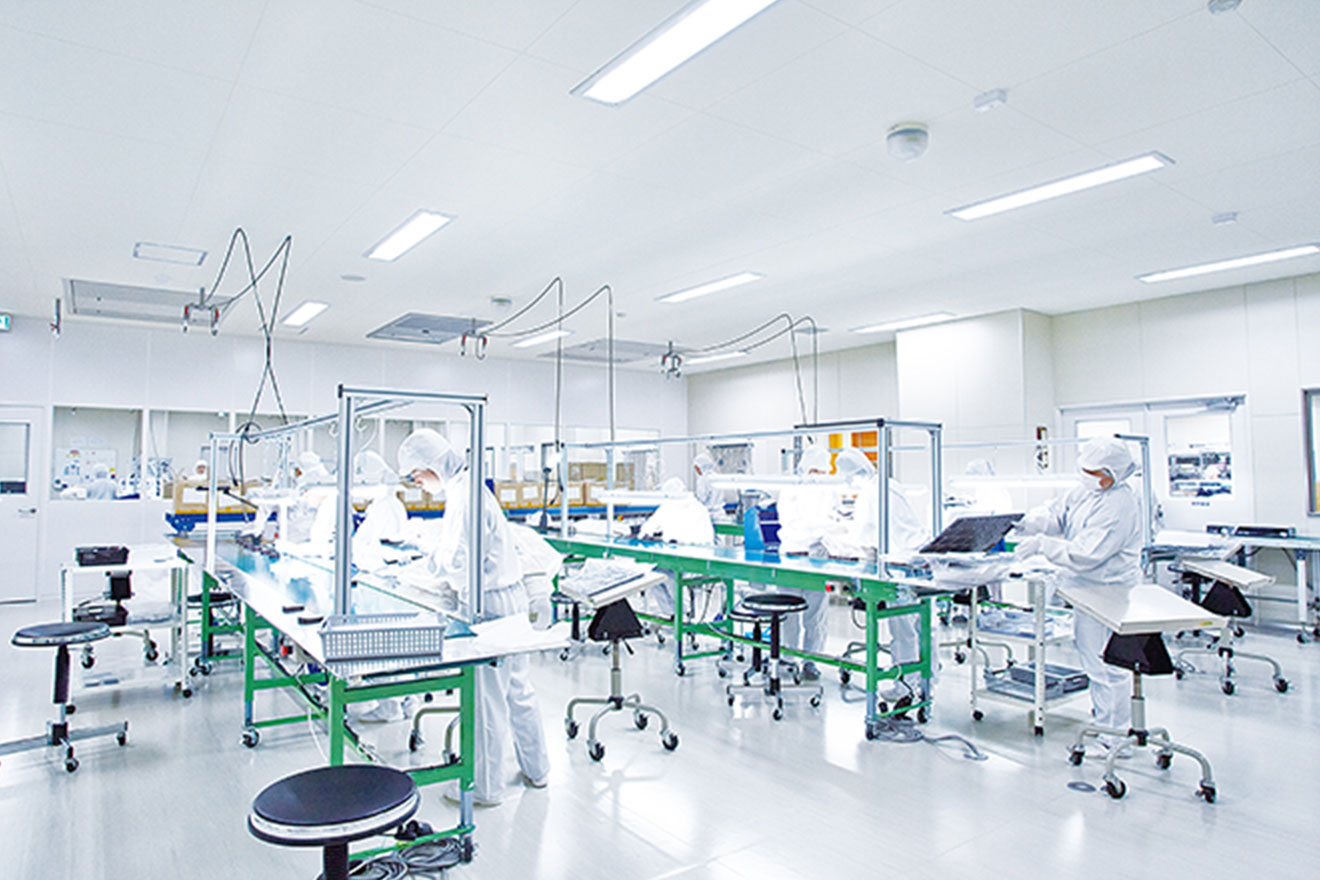
Great care is also taken to avoid contamination with dust or foreign bodies when the inspectors and test samples enter or leave the clean room, enabling us to carry out more accurate product testing.
[Clean room class: 100,000 (0.5µm)]
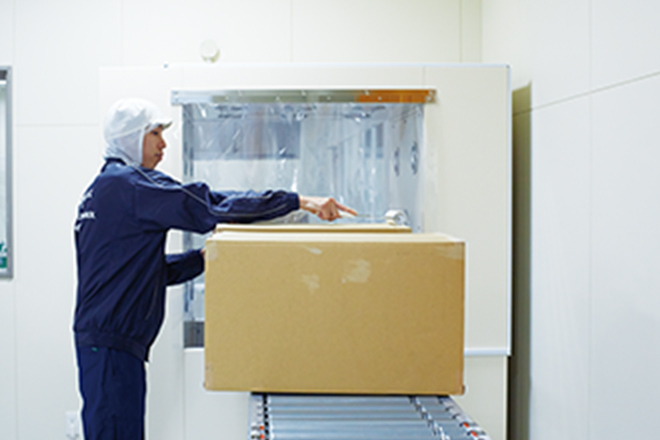
Carry-in
Dirt is cleaned off the surfaces of cardboard boxes and they are given an air shower before being allowed to enter the clean room.
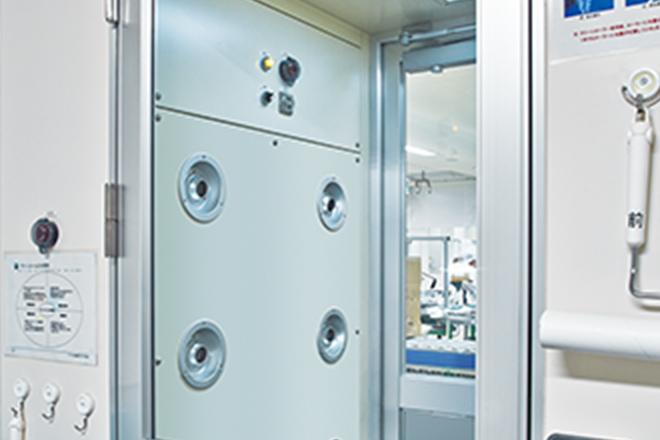
Air shower
Staff wear special hats and white clothing to work in the clean room. They change into special shoes, and only go in after taking an air shower.
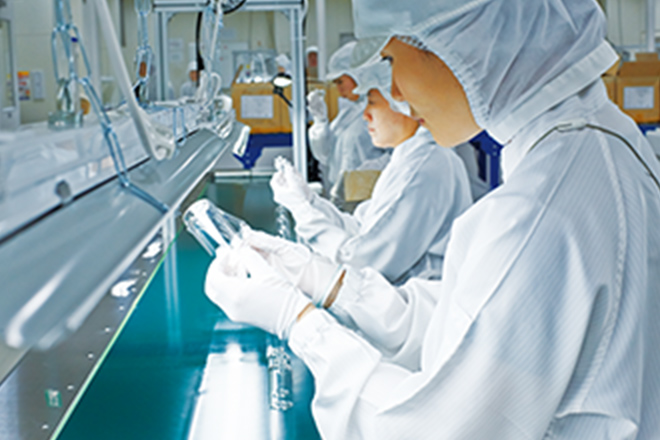
Inspection line
Inspections are carried out in this clean environment by highly experienced inspectors.
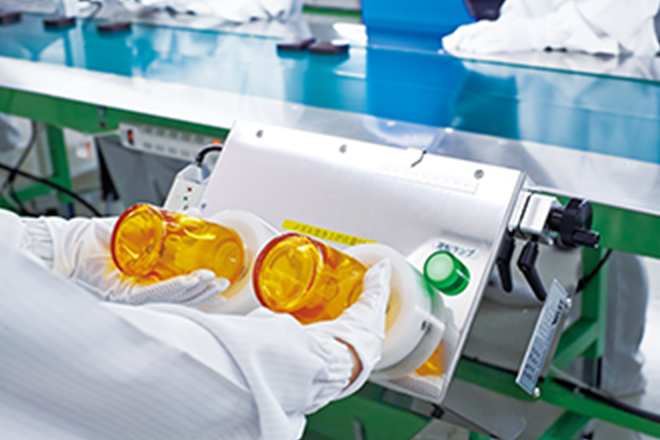
Air cleaning
Dust adhering due to static electricity is removed both internally and externally by using an electrostatic blower dust collector.
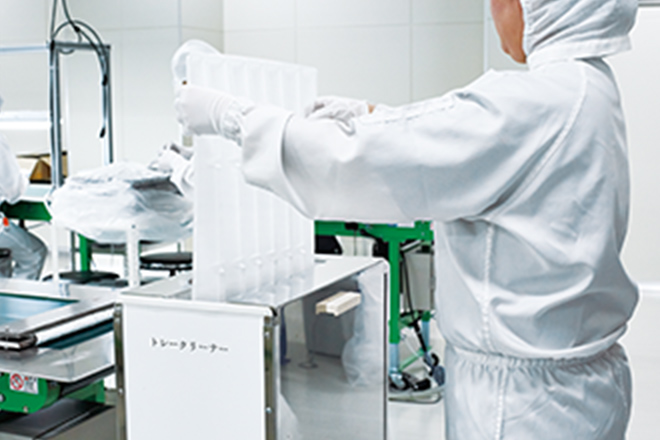
Air cleaner for trays
Tray Cleaner GⅡ (developed in-house)
Trays and insulating material tend to collect static electricity, which attracts dust. They are kept clean more effectively by using a special neutralizing blower as an air cleaner.
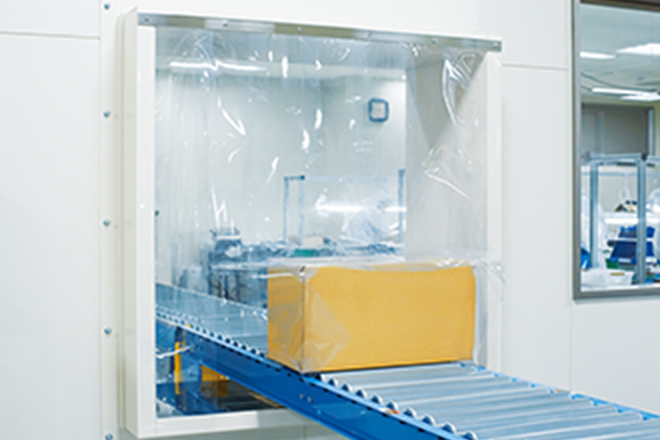
Carry-out
Cardboard boxes containing inspected products are sealed with tape and carried out through the double-curtained exit door.
Bottle-rinsing line
(inside the clean room)
Reverse osmosis* (RO) water is generated by passing tap water through an activated charcoal filter to remove residual chlorine, a softening apparatus to eliminate hardness components, and an RO membrane to reduce ions, after which this RO water is further treated with an ultraviolet sterilizer.
The fully automated bottle-rinsing line has also been installed. This uses RO water for the internal and external rinsing mainly of glass bottles, which are then dried automatically.
* A reverse osmosis (RO) membrane is a type of filter that contains countless microscopic pores. Water treated with this membrane is called RO water.
